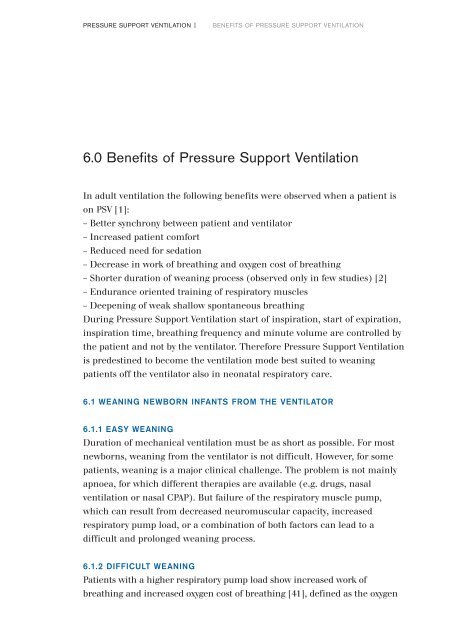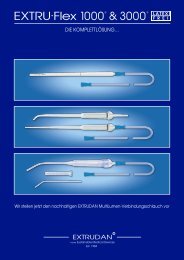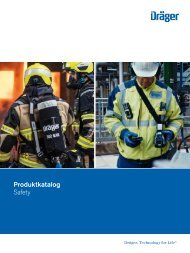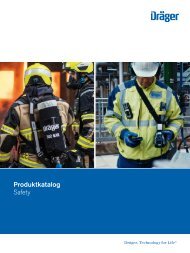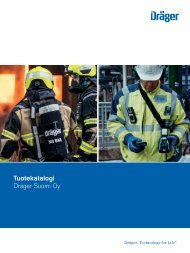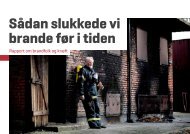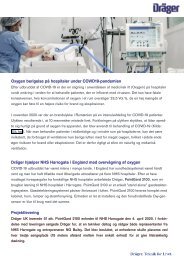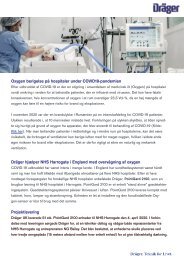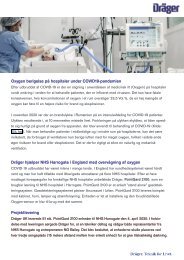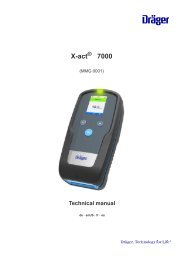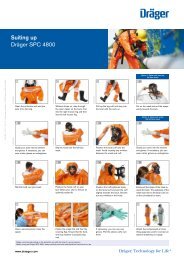Pressure Support Ventilation - A New Triggered Venilation Mode for Neonates
Booklet about pressure support ventilation written by Jean Christophe Roze and Thomas Krueger.
Booklet about pressure support ventilation written by Jean Christophe Roze and Thomas Krueger.
Create successful ePaper yourself
Turn your PDF publications into a flip-book with our unique Google optimized e-Paper software.
PRESSURE SUPPORT VENTILATION |<br />
BENEFITS OF PRESSURE SUPPORT VENTILATION<br />
6.0 Benefits of <strong>Pressure</strong> <strong>Support</strong> <strong>Ventilation</strong><br />
In adult ventilation the following benefits were observed when a patient is<br />
on PSV [1]:<br />
– Better synchrony between patient and ventilator<br />
– Increased patient com<strong>for</strong>t<br />
– Reduced need <strong>for</strong> sedation<br />
– Decrease in work of breathing and oxygen cost of breathing<br />
– Shorter duration of weaning process (observed only in few studies) [2]<br />
– Endurance oriented training of respiratory muscles<br />
– Deepening of weak shallow spontaneous breathing<br />
During <strong>Pressure</strong> <strong>Support</strong> <strong>Ventilation</strong> start of inspiration, start of expiration,<br />
inspiration time, breathing frequency and minute volume are controlled by<br />
the patient and not by the ventilator. There<strong>for</strong>e <strong>Pressure</strong> <strong>Support</strong> <strong>Ventilation</strong><br />
is predestined to become the ventilation mode best suited to weaning<br />
patients off the ventilator also in neonatal respiratory care.<br />
6.1 WEANING NEWBORN INFANTS FROM THE VENTILATOR<br />
6.1.1 EASY WEANING<br />
Duration of mechanical ventilation must be as short as possible. For most<br />
newborns, weaning from the ventilator is not difficult. However, <strong>for</strong> some<br />
patients, weaning is a major clinical challenge. The problem is not mainly<br />
apnoea, <strong>for</strong> which different therapies are available (e.g. drugs, nasal<br />
ventilation or nasal CPAP). But failure of the respiratory muscle pump,<br />
which can result from decreased neuromuscular capacity, increased<br />
respiratory pump load, or a combination of both factors can lead to a<br />
difficult and prolonged weaning process.<br />
6.1.2 DIFFICULT WEANING<br />
Patients with a higher respiratory pump load show increased work of<br />
breathing and increased oxygen cost of breathing [41], defined as the oxygen


